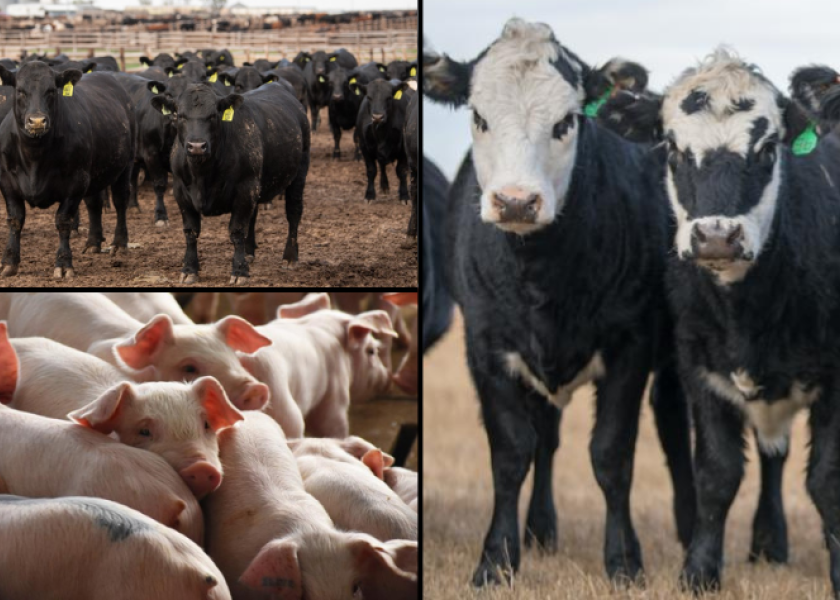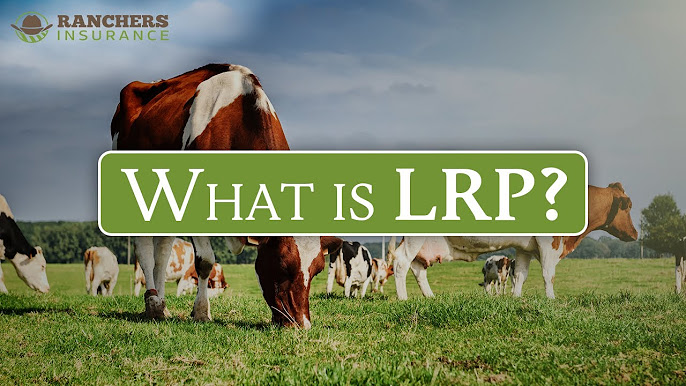Trick Factors to Consider When Choosing Livestock Threat Protection (LRP) Insurance
When examining options for Livestock Threat Security (LRP) insurance policy, a number of vital variables require mindful consideration to make sure reliable danger monitoring in the agricultural market. Choosing the best insurance coverage options tailored to your details livestock operation is extremely important, as is understanding exactly how exceptional costs correlate with the level of defense offered.
Coverage Options
When taking into consideration Animals Risk Security (LRP) insurance policy, it is important to comprehend the different insurance coverage options available to reduce dangers in the farming field. Livestock Risk Protection (LRP) insurance coverage uses various coverage options tailored to meet the diverse needs of livestock producers. Bagley Risk Management. One of the main insurance coverage alternatives is rate coverage, which protects against a decline in market prices. Producers can choose the coverage level that aligns with their price risk management goals, allowing them to secure their procedures against prospective financial losses.
One more vital insurance coverage alternative is the endorsement period, which establishes the size of time the protection is in effect. Manufacturers can choose the endorsement duration that finest suits their manufacturing cycle and market conditions. Additionally, insurance coverage levels and prices vary based upon the kind of livestock being guaranteed, giving manufacturers the versatility to customize their insurance policy plans according to their details demands.
Understanding the various coverage alternatives offered under Animals Danger Defense (LRP) insurance coverage is essential for manufacturers to make informed decisions that efficiently protect their livestock procedures from market uncertainties.
Costs Costs

Animals Threat Protection (LRP) insurance gives important coverage options tailored to alleviate dangers in the farming market, with a considerable aspect to consider being the estimation and structure of premium costs. These consist of the type and number of livestock being guaranteed, the protection level picked, the present market prices, historic cost data, and the size of the protection period.
Premium prices for LRP insurance coverage are usually calculated based upon actuarial information and risk analysis designs. Insurance providers analyze historic data on animals prices and manufacturing costs to establish a suitable costs that shows the degree of risk entailed. It is important for animals producers to carefully examine premium prices and protection alternatives to ensure they are properly shielded against possible financial losses as a result of adverse market conditions or unpredicted events. By comprehending just how premium expenses are calculated and structured, producers can make educated choices when selecting the ideal LRP insurance coverage policy for their operation.
Qualified Livestock
The determination of eligible animals for Livestock Danger Protection (LRP) insurance coverage includes careful factor to consider of certain criteria and characteristics. Animals kinds that are commonly qualified for LRP insurance coverage include feeder livestock, fed swine, livestock, and lambs.
Feeder cattle, for instance, are frequently eligible for LRP insurance coverage if they fall within defined weight varieties. Fed cattle might also be qualified, but they have to satisfy certain weight and top quality grade needs. Swine eligible for coverage generally include market weight pets meant for massacre. Lambs are one more group of livestock that can be considered for LRP insurance coverage, with factors such as weight and age playing a crucial function in establishing their eligibility.
Prior to picking LRP insurance for livestock, manufacturers need to thoroughly examine the qualification criteria described by the insurance policy provider to ensure their animals satisfy the essential requirements for coverage.
Policy Versatility
Plan adaptability in Animals Threat Protection (LRP) insurance enables producers check my source to tailor coverage to fit their certain demands and take the chance of management strategies. This flexibility empowers you could try these out livestock producers to personalize their insurance policy plans based upon variables such as the kind of animals they possess, market problems, and private danger resistance degrees. One vital facet of plan versatility in LRP insurance coverage is the capability to select protection levels that align with the manufacturer's economic objectives and run the risk of exposure. Producers can pick insurance coverage degrees that secure them against possible losses as a result of variations in livestock prices, ensuring they are properly insured without paying too much for unneeded coverage. Furthermore, LRP insurance offers adaptability in plan duration, allowing manufacturers to select coverage durations that ideal fit their manufacturing cycles and advertising timelines. By providing customizable choices, LRP insurance coverage enables manufacturers to effectively manage their danger exposure while securing their animals operations versus unpredicted market volatility.
Claims Process
Upon experiencing a loss or damages, manufacturers can initiate the insurance claims procedure for their Animals Threat Protection (LRP) insurance coverage by quickly calling their insurance policy company. It is vital for manufacturers to report the loss as soon as possible to speed up the insurance claims procedure. When getting to out to the insurance coverage provider, producers will need to supply in-depth details concerning the case, including the date, nature of the loss, and any type of pertinent documents such as vet documents or market value.

After the evaluation is complete, the insurance coverage provider will choose concerning the case and communicate the result to the manufacturer. If the claim is authorized, the producer will certainly obtain settlement according to the terms of their Livestock Threat Protection (LRP) insurance plan. Bagley Risk Management. It is important for producers to be acquainted with the cases procedure to make certain a smooth experience in the event of a loss

Conclusion
In conclusion, when selecting Animals Threat Defense (LRP) insurance policy, it is necessary to think about protection choices, premium costs, eligible animals, plan versatility, and the insurance claims process. These key variables will certainly assist make sure that breeders and farmers are sufficiently safeguarded versus possible dangers and losses connected with their animals procedures. Making an informed choice based upon these considerations can eventually cause better economic safety and comfort for livestock manufacturers.
Livestock Threat Security (LRP) insurance supplies different insurance coverage alternatives customized to meet the varied needs of animals producers.The resolution of eligible animals for Livestock Risk Security (LRP) insurance coverage involves mindful consideration of details requirements and characteristics.Policy adaptability in Livestock Threat Protection (LRP) insurance policy allows manufacturers to tailor protection to suit their details needs and run the risk of management methods.Upon experiencing a loss or damages, producers can start the cases process for their Animals Threat Protection (LRP) insurance coverage by promptly calling their insurance policy company.In verdict, when selecting Livestock Danger Defense (LRP) insurance, it is vital to take into consideration coverage choices, premium expenses, eligible livestock, plan adaptability, and the claims process.